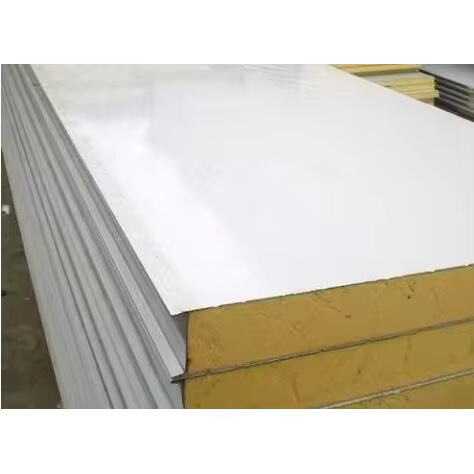Sustainable Factory Building Architecture
Green Building Certifications for Industrial Projects
Green building certifications like LEED, BREEAM, and Green Star are essential for enhancing the sustainability of factory buildings. These certifications serve as benchmarks for eco-friendly construction, guiding industrial projects toward reduced environmental impacts. They promote strategies that lower carbon footprints, enhance energy efficiency, and utilize resources sustainably. For instance, LEED-certified buildings have been shown to reduce energy expenses by up to 25% compared to non-certified buildings. Additionally, the demand for these certifications has soared, with the number of certified industrial buildings increasing by over 15% annually in recent years. This trend underscores the rising awareness and commitment within the industry to adopt sustainable building practices.
Recycled and Low-Carbon Material Innovations
In the realm of factory construction, innovative materials derived from recycled products and low-carbon alternatives are carving a path toward sustainability. Materials such as recycled steel and bamboo are increasingly employed, offering robust structural capabilities while minimizing carbon emissions. For instance, geopolymer concrete—a low-carbon substitute for traditional concrete—provides similar durability but with significantly reduced environmental impact. Several factories have successfully integrated these materials, showcasing both sustainability and cost-effectiveness. Case studies reveal that using recycled and low-carbon materials can lead to up to a 30% reduction in construction costs, while simultaneously contributing to environmental conservation efforts. These advancements not only demonstrate the feasibility of sustainable construction but also highlight the potential for broader industry adoption.
Smart Technology Integration in Factory Design
IoT-Driven Energy Efficiency Systems
he integration of IoT in factory design is transforming how energy efficiency is achieved. IoT applications allow for real-time monitoring and optimization of energy consumption through a network of smart sensors and devices. Examples include sensors that regulate lighting and climate systems based on occupancy and natural light. These technologies significantly contribute to lowering energy use. In fact, advanced IoT-enabled energy systems have been shown to reduce factory energy consumption by up to 20%, thanks to their precise control and intelligent energy management. This integration not only saves operational costs but also supports the broader goal of minimizing the environmental footprint in sustainable factory building architecture.
Automated Production Layout Optimization
Automation plays a crucial role in optimizing factory production layouts, minimizing waste and enhancing efficiency. Modern software solutions, utilizing data analytics and machine learning, allow for the strategic arrangement of machinery and workflows. These technologies can significantly improve productivity by reducing cycle times and optimizing space utilization. In some large-scale factories, the use of automation in layout planning has led to major gains in product throughput and reductions in manufacturing waste. These advancements demonstrate how integrating intelligent layout planning into factory design supports more sustainable and economically efficient industrial operations.
Modular Construction Revolution
Prefabricated Factory Components
Prefabrication offers numerous benefits for factory construction, notably reducing construction time and labor costs. By assembling components off-site and transporting them for on-site installation, factories can be constructed more swiftly, enhancing project timelines significantly. For example, in several large-scale industrial projects, the use of prefabricated structural sections has streamlined the assembly process, saving both time and resources during construction. Beyond efficiency, prefabricated components also promote sustainability. The controlled manufacturing environment minimizes material waste and improves energy efficiency, aligning with broader industry trends toward eco-friendly and lean construction practices.
Scalable Manufacturing Space Configurations
Modular designs revolutionize manufacturing spaces by providing the flexibility needed to adapt to shifting production demands. These designs incorporate customizable configurations that manufacturers can easily upscale or modify as needed. Popular configurations include movable walls and adaptable infrastructure, which allow seamless transitions to meet varying operational requirements. This flexibility is increasingly in demand, as evidenced by growth statistics; the market for adaptable factory spaces is projected to rise significantly, driven by the need to quickly adjust to market dynamics and evolving consumer needs. By investing in scalable designs, manufacturers can future-proof their operations in a rapidly changing industrial landscape.
Biophilic Design in Industrial Environments
Daylight Harvesting Techniques
Daylight harvesting is a crucial concept in biophilic design, particularly within industrial environments, offering significant benefits such as enhanced productivity and reduced lighting costs. By optimizing natural light, businesses can create more pleasant workspaces and decrease their dependency on artificial lighting. Common techniques include employing skylights, large windows, and reflective surfaces to direct and amplify daylight throughout a facility. For example, the integration of large glass panels or strategically placed mirrors can significantly increase the amount of useful daylight entering a factory setting.
Studies have consistently shown that exposure to natural light can improve employee well-being, leading to heightened productivity and job satisfaction. Research cited in the Journal of Clinical Sleep Medicine, for instance, indicates that workers in well-lit environments tend to sleep better, feel more focused, and experience less stress. These findings underscore the importance of incorporating natural light in factory building architecture to create a more efficient and healthy workplace.
Vertical Green Infrastructure Integration
Integrating vertical green infrastructures, such as green walls and vertical gardens, into factories epitomizes biophilic design, offering both aesthetic appeal and functional benefits. These installations serve to improve indoor air quality, providing a constant supply of oxygen while absorbing pollutants and excess carbon dioxide. For instance, a vertical garden can act as a natural air filter, creating a more pleasant working environment and enhancing overall employee health.
Moreover, these natural installations contribute positively to mental health. A report from Environmental Health Perspectives suggests that exposure to plant life and nature views can lead to reduced levels of depression and anxiety, fostering a sense of calm and well-being. By incorporating such green features into industrial environments, we not only embrace eco-friendliness but also promote enhanced mental health for factory employees. This holistic approach aligns well with the principles of biophilic design, ensuring our industrial spaces support both human and environmental health.
Adaptive Reuse of Industrial Buildings
Retrofitting Historic Factories for Modern Use
Retrofitting historic factories to accommodate modern manufacturing needs is an essential practice in adaptive reuse. This approach not only preserves the architectural heritage of industrial structures but also breathes new life into them by integrating contemporary functionality. Key design elements include maintaining the historical integrity of the building's facade while updating the interior with modern technology and efficient layouts. A great example is the Tate Modern in London, where a former power station was transformed into a world-famous art gallery. This project illustrates the profound community impact and revitalization potential that comes with creatively preserving industrial spaces.
Cost-Effective Structural Upcycling
Structural upcycling involves transforming existing industrial buildings into functional spaces without extensive demolition, making it a cost-effective approach to building adaptation. This method involves using sustainable materials and innovative techniques to renovate structures at a fraction of the cost. For instance, the use of repurposed steel beams and recycled concrete in factory redevelopments significantly reduces costs and environmental impact. A leading example is the Factory 21 project in Berlin, where old factory buildings were successfully converted into creative workspaces using upcycled materials, demonstrating considerable savings and sustainable design outcomes.

3D-Printed Architectural Innovations
On-Demand Manufacturing Complex Printing
3D printing technology revolutionizes the ability to create complex factory designs on demand, allowing for remarkable advancements in factory building architecture. This cutting-edge approach leverages additive manufacturing, a process that builds structures layer by layer, enabling highly customized and intricate designs tailored to specific industrial needs. The implications for customization are profound; factories can now be designed to optimize space, enhance flow, and integrate specific sustainability features, aligning with the unique demands of each business.
Additionally, 3D printing leads to significant cost reductions and faster production times. According to industry reports, manufacturing costs might see a reduction of up to 50%, while production speeds can increase by 200% compared to traditional methods. This not only speeds up the building process but also decreases the environmental footprint by minimizing waste, making it a highly attractive option for modern factory construction.
Customized Factory Component Fabrication
The technology of 3D printing facilitates the fabrication of unique factory components specifically tailored to operational necessities, significantly boosting efficiency and reducing costs. This versatility allows businesses to design components that fit perfectly with their processes, eliminating the need to adjust operations to accommodate standard parts. Customization translates into streamlined operations and reduces downtime, allowing factories to operate more efficiently.
Industry examples illustrate the successful adoption of 3D-printed components, highlighting its transformative potential. Companies in sectors ranging from automotive to electronics are embracing this technology to create specialized tools and parts that enhance production capabilities while also saving costs, reflecting how 3D printing continues to push the boundaries of what's achievable in factory manufacturing.
FAQ
What are green building certifications, and why are they important for factories?
Green building certifications, such as LEED, BREEAM, and Green Star, set standards for eco-friendly construction, helping reduce the environmental impact of factory buildings. They promote energy efficiency, sustainable resource use, and lower carbon footprints, often leading to cost savings and enhanced sustainability of industrial projects.
How do recycled and low-carbon materials benefit factory construction?
Recycled and low-carbon materials, like recycled steel and geopolymer concrete, offer durable alternatives with reduced carbon emissions. They help decrease construction costs by up to 30% while supporting environmental conservation, making sustainable factory construction more feasible and cost-effective.
In what ways can IoT technology improve energy efficiency in factories?
IoT technology optimizes energy consumption through real-time monitoring with smart sensors and devices, such as occupancy-based lighting controls. This reduces energy use by up to 20% and supports sustainable practices by minimizing overall carbon footprints.
What is the advantage of modular construction in factories?
Modular construction involves using prefabricated components which reduce construction time and costs. This method supports sustainability by minimizing waste and energy usage, while also allowing for flexible and scalable manufacturing space configurations to adapt to changing production demands.
How does biophilic design enhance industrial environments?
Biophilic design incorporates natural elements like daylight and green infrastructure into factory settings, improving air quality and providing mental health benefits. This approach enhances employee well-being, increases productivity, and aligns factory aesthetics with eco-friendly principles.
Table of Contents
- Sustainable Factory Building Architecture
- Green Building Certifications for Industrial Projects
- Recycled and Low-Carbon Material Innovations
- Smart Technology Integration in Factory Design
- Modular Construction Revolution
- Biophilic Design in Industrial Environments
- Adaptive Reuse of Industrial Buildings
- 3D-Printed Architectural Innovations
- FAQ

 EN
EN







































